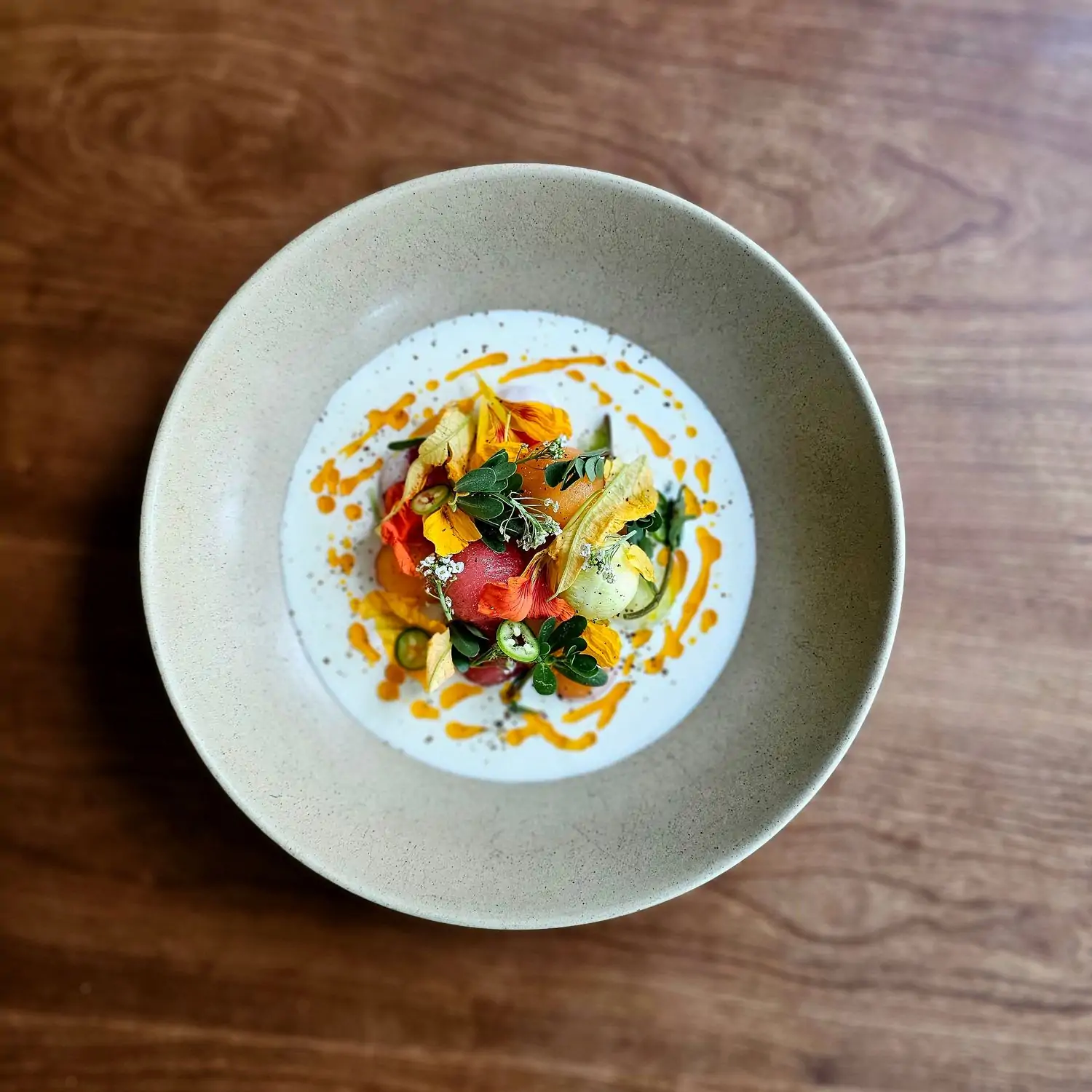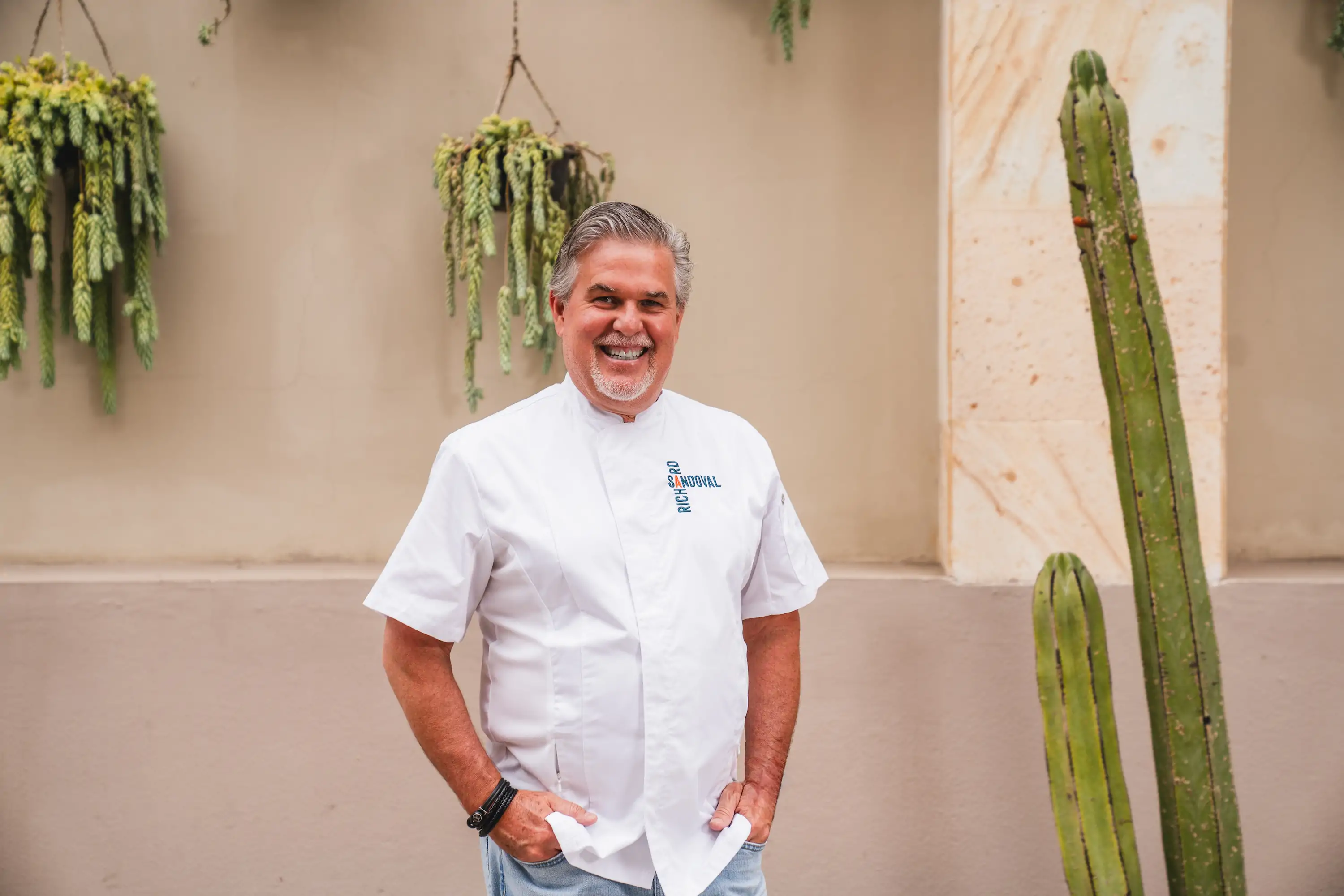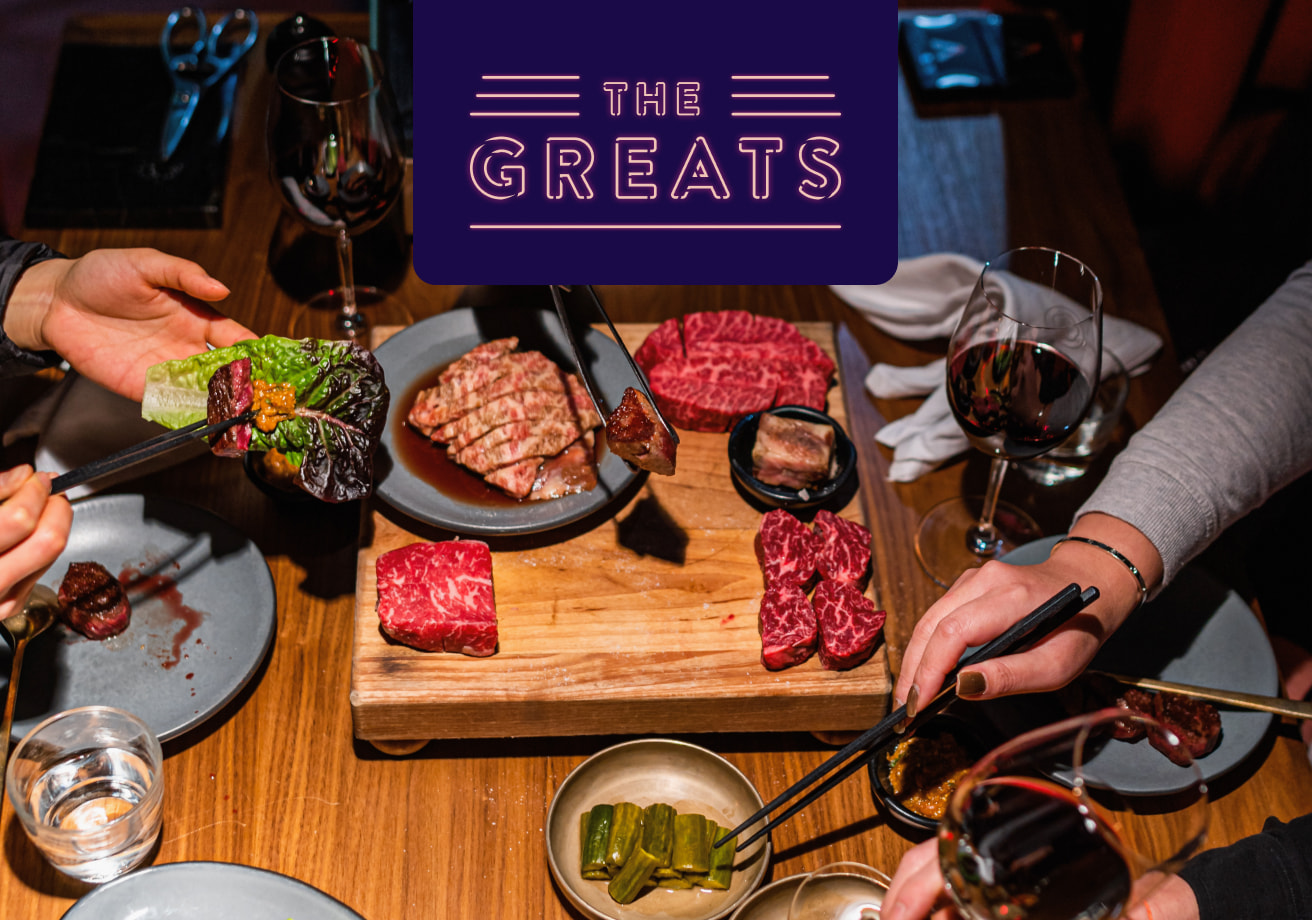Pietramala in Philadelphia has a casual dining room full of plants, soft light, and comfortable seating. The service is friendly, never stiff, and the room often feels more like a friend’s living room than it does a high-end restaurant. But that simplicity belies the complexity of the food being plated in the restaurant’s small kitchen.
Chef and owner Ian Graye opened the restaurant in 2022 with a focus on plant-based cooking. Graye and his team use local produce, fermentation, and a lot of experimentation to build a foundation of big, rich flavors without the use of animal products. And the restaurant’s been met with universal acclaim: It snagged Best New Restaurant designations from Eater and Bon Appétit and was just named one of the top 10 restaurants in the city by the Philadelphia Inquirer in 2024.
The restaurant’s menu changes frequently, and when you’re there next, you’ll notice the descriptions on it are spare. “We don’t want to be overly informative,” Graye says. “To most people, it’s just like, oh, this is a really good roasted mushroom.” But many of the dishes rely on a handful of painstakingly made staple ingredients that help bring the plates together in front of you, and we sat down with Graye to talk through them.
Read on for those can’t miss ingredients and what to try them in at Pietramala in Philadelphia, and make a booking on OpenTable.
The monthslong journey to a kitchen favorite
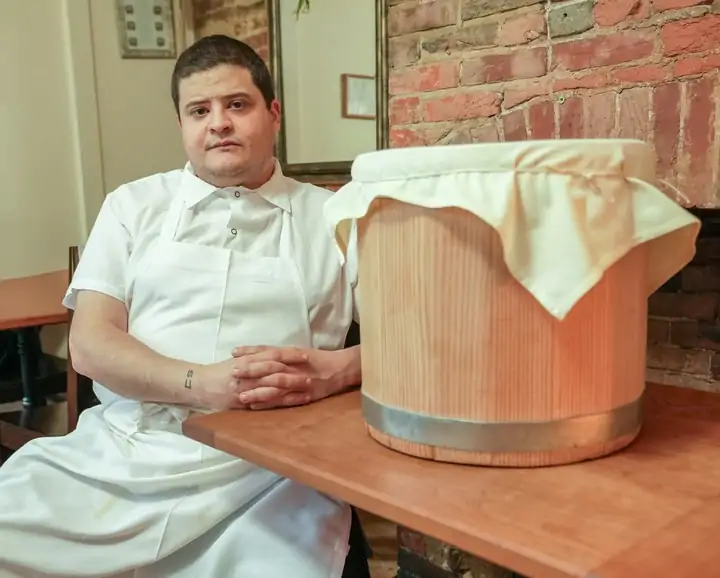
One of Pietramala’s staples is a miso-glazed mushroom. It sounds simple, but the miso is made in house and takes months to ferment and perfect.
“We make the miso because we really want to control the process,” Graye says. Commercial miso is typically more salty, but Pietramala’s version is much milder, allowing them to turn it into a glaze for mushrooms using a classic French technique for stock and sauce making.
Like all miso, it starts with a bean or pea; most recently they’ve used Sea Island Red Peas. Combined with koji, the miso ferments for several months, building a sweeter, milder flavor than most people associate with miso.
“For the mushrooms, for example, we make a misjus, a classic jus in the French technique, but without the addition of any meat product,” Graye says. “We make a stock from onions, carrots, and celery that we roast in our wood fire, and then we blend the miso with that stock.”
The stock cooks for about 24 hours, then gets strained and reduced to a sticky glaze that they use on the mushrooms, among other things. The effect is a shiny glaze on the mushrooms that doesn’t necessarily indicate the restaurant’s months of work. Instead, like Graye says, it just tastes like a very delicious mushroom.
A Roman condiment gets a plant-based twist
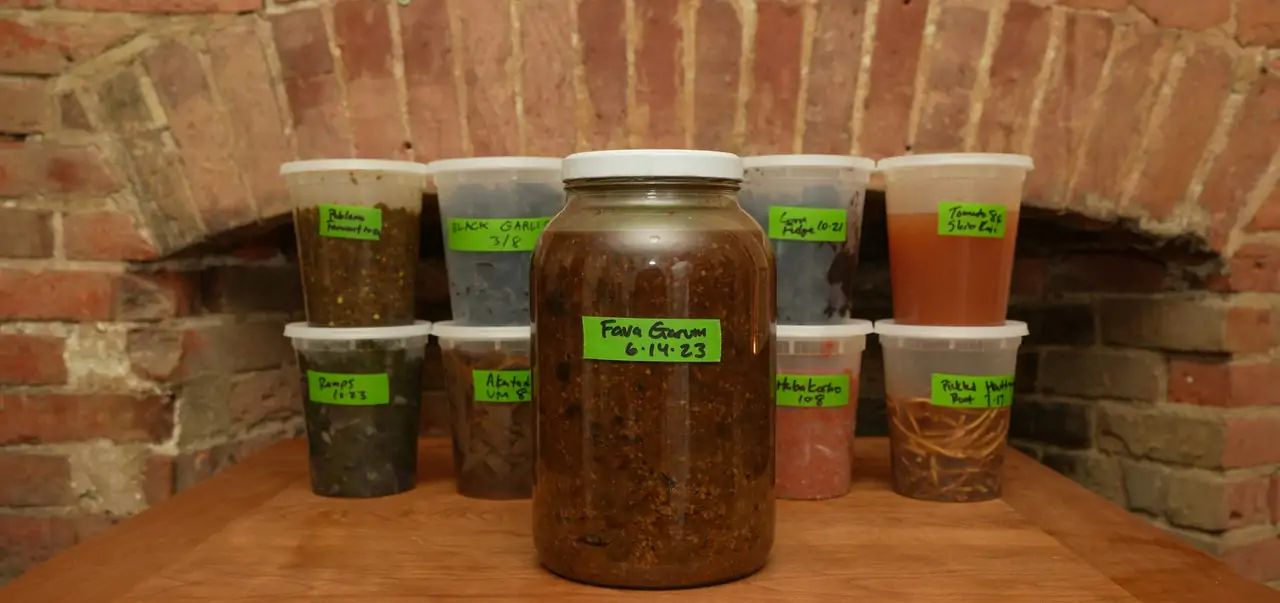
“I often feel like when we’re preserving, we’re aiming for one thing and then we end up with something else,” Graye says. “The porcini garum is a good example of that.”
Garum is a Roman fermented fish sauce that’s typically used as a condiment, but the one at Pietramala came about due to an excess of porcini mushrooms. “This forager we work with came through the door with over 30 pounds of porcini mushrooms,” Graye says. “That’s a lot for us, and with that kind of mushroom, you really want to use them within days.”
Instead of serving them fresh, Graye decided to preserve them. He blended them with salt and koji and set the mixture in some containers to age. “We actually kind of forgot about it,” he says. While working on a matsutake mushroom dish this past December, where the sauce went sideways, he remembered the porcini liquid that had been sitting for months.
“It’s really just a porcini-flavored liquid that has been preserved and then broken down with the enzymes of the koji,” he says. “We’re definitely interested in trying it again, but I can’t say for sure if it will work the same way.” You’ll find the porcini garum adding an extra mushroom-y kick to the cremini carpaccio on the menu right now.
An unexpected surprise with a Cantonese staple
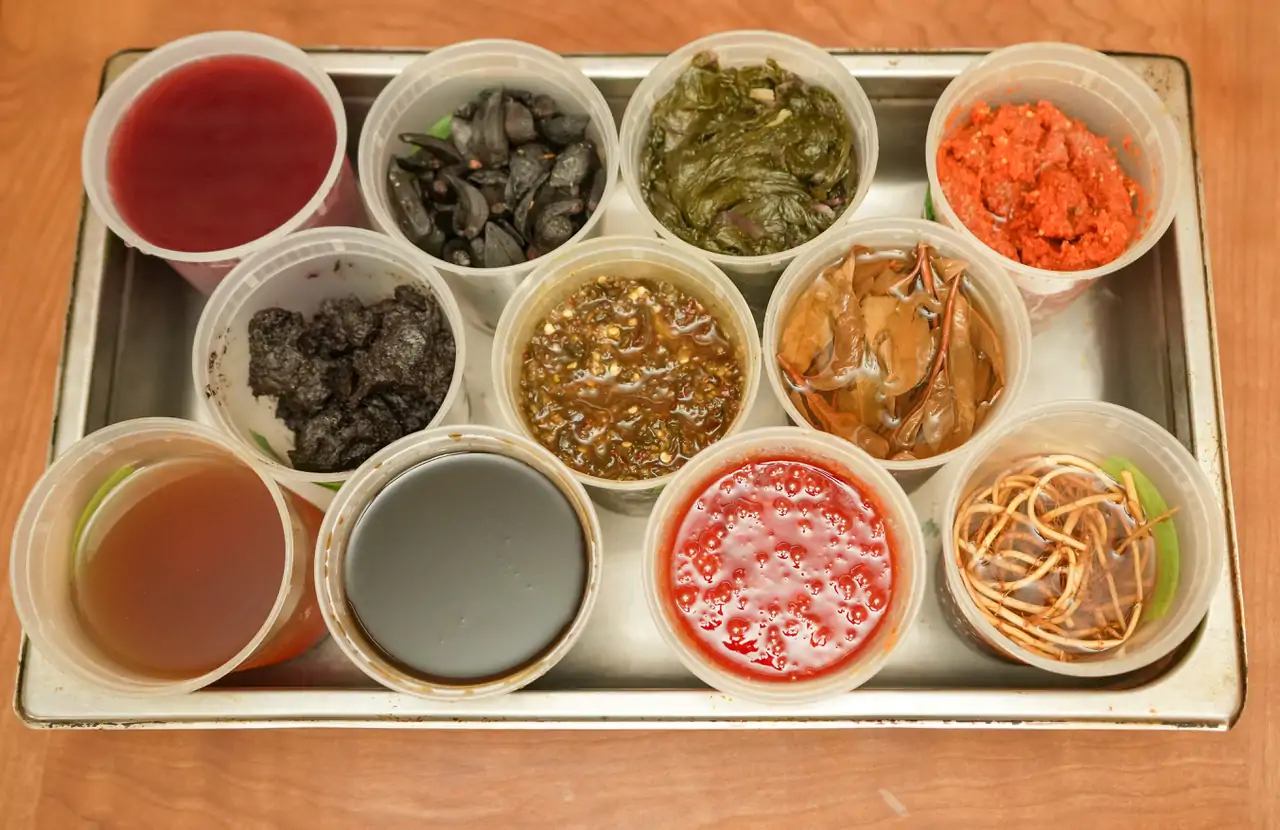
Much like the garum, a tomato XO sauce inspired by the ham and shrimp-based Cantonese condiment was the result of a happy accident. “I was actually trying to make this Sicilian condiment called capuliato,” Graye says. “It’s made from dried tomatoes, garlic, olive oil, and possibly basil or oregano. It’s much lighter than an XO sauce.”
But as they worked on the sauce, concentrating and caramelizing the tomatoes, they decided to add fennel seed and mushrooms, which added a strong meatiness and umami. “It got to a point where it was kind of like liquid pepperoni,” Graye says. “Like pizza drippings, almost. We were like is this XO? Is this capuliato? Is this salsa macha?”
He originally made it to go on a melon dish over the summer, but it’s become a favorite among the restaurant’s team. It’s currently served as a rich, lightly spicy dip for the restaurant’s bread service.
“We love it so much we just decided to keep it going,” Graye says. “We’ve preserved tomatoes from the summer for this, and we’re also planning to dry some tomatoes during the season this year.”
Maddy Sweitzer-Lammé is a Philadelphia-based freelance food, beverage, and travel writer, and the owner of Tiny Table Tours, a boutique food tour company.

